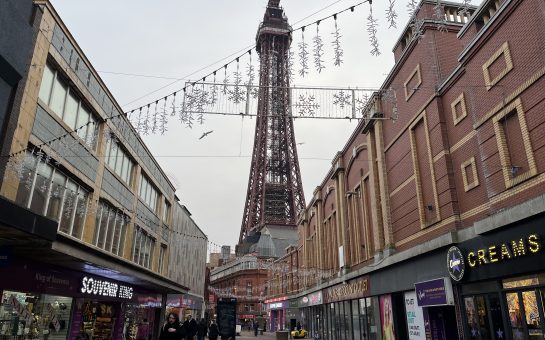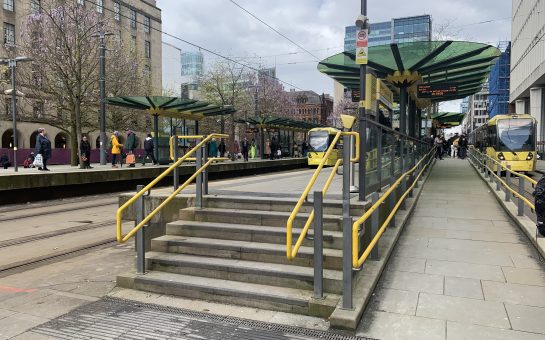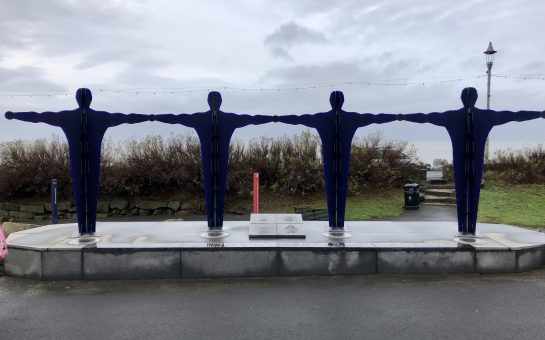Between 1991 and 1994, England became the focus of attention for the installing of major new roller coasters.
The build up to the English Tourist Board’s Year of the Roller Coaster in 1994 began in a town called Stainley near to Ripon in North Yorkshire.
Robert Staveley was the owner at the time designed the layout for The Ultimate, the World’s longest roller coaster, covering an area of 44 acres with a track length of just over one and half miles.
It opened in 1991 and no doubt inspired other parks in the country to expand.
In 1992, it was announced that three major UK parks would be investing heavily for the 1994 season. Alton Towers, Blackpool Pleasure Beach and Drayton Manor Park would be hiring three major companies to design the world beating roller coasters.
Bolliger & Mabillard and Intamin from Switzerland designed the UK’s first suspended looping coaster and the first stand-up roller coaster in Europe.
Nemesis at Alton Towers proved to be one of the most intense rides ever built and people from all the world came to ride it after its preview opening for GMTV on March 28 1994.
I was invited to this event and it was an amazing experience riding the coaster with Ross Kelly from the morning television show.
Drayton Manor Park contacted Intamin to design and build 7up Shockwave a four inverted coaster that featured a world’s first element for a stand-up ride, which opened in March 1994.
The inline twist had never been seen before on a stand-up coaster and to make it more thrilling, the train executes it over the rapids ride giving each rider the near miss sensation.
Two months later saw the opening of The Pepsi Max Big One in Blackpool after two and half of years of construction by Watson Steel, and Allott & Lomax, two Manchester based engineering firms.
Watson Steel, like many companies in the early 1900s, began life as a family-based organisation. Founded by Robert Watson (1886 – 1949) in 1933 they went on to become one of the biggest steel fabricators in the country.
William M Watson (1896 – 1960) was born the same year that another family owned attraction opened in the North West of England, namely Blackpool Pleasure Beach.
At the time, the Pleasure Beach was the odd ride built on the sands at the South Shore; yet more than 125 years later, the park is still the most popular tourist attraction in the UK Amusement Park industry.
The company was family owned up until 1978 when they were merged with Fairclough Building. Shortly after, in 1981, the company joined Amec, and it was under this merger, although still named Watson Steel, that they would, for the second time, be involved with Blackpool Pleasure Beach.
EUROPE’S FIRST LOOPING COASTER
As roller coaster interest grew, so did how they were built. Since the late 1800s, wooden roller coasters, including Scenic Railways, which had no undertrack rollers, were noticeable in several seaside resorts.
It was not until the 1920s that the undertrack roller was invented, and new more daring wooden coasters were built. In 1923, Blackpool Pleasure Beach built the UK’s first roller coaster with this design. Following the construction of the Big Dipper, the park built multiple wooden coasters right up to 1935 using the same design methods, these were the Roller Coaster (1933), Zipper Dipper (1934) and the Grand National (1935).
While the park was expanding, so to were Watson Steel. The Bolton based company between 1956 and 1971 fabricated steel for companies including Heathrow Airport where the constructed one of the passenger terminals in 1958, Gathurst Viaduct for the M6 in 1959, and the Rakewood Viaduct for the newly built M62.
But it was in 1978 that the company would first come in to contact with the Pleasure Beach for construction of Europe’s first looping roller coaster.
The park contacted America based designers Arrow Dynamics who had previously built Matterhorn Mountain for Disneyland in California to design the launched roller coaster simply known as the Revolution.
All the structural work was fabricated by Watson Steel in time for its 1979 opening and this was the beginning of a work-based relationship between Arrow Dynamics, the Pleasure Beach and Watson Steel.
Arrow however had already been involved with the park 1977 with the construction of the three track Steeplechase, which, alongside the Revolution, still operates to this day.
Watson Steel first worked with the Pleasure Beach between 1978 and 1979 for the fabricating of the steel work for the Revolution which put them in good stead for future projects.
Peter Miller, the Associate Sales & Estimating Director for Severfield, said: “Because of this, we were the natural contenders for the construction of The Pepsi Max Big One.”
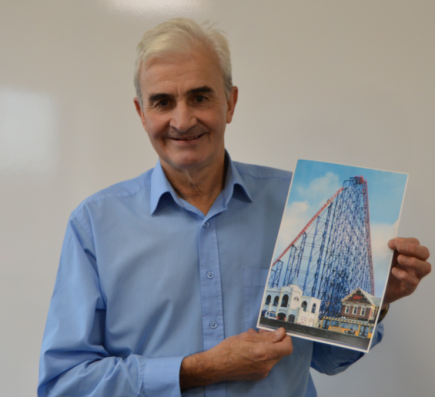
MADE IN MANCHESTER: Peter Miller with an artist’s impression of the finished Blackpool project, which was completed with the help of Mancunian structural engineers
Thirteen years on from the Revolution, the Pleasure Beach was now under the control of Geoffrey Thompson, son of Doris Thompson, who contacted Arrow Dynamics, Watson Steel and Manchester based Allott & Lomax to work on the structural engineering of this project.
Peter said: “Our main contact was Dr John Roberts at Allott & Lomax, he was the person we worked with.”
One of the biggest problems with the new roller coaster was the lack of space in relation to where Watson Steel could piece the structure together, and how to get it into the park. Each section was transported to Blackpool Airport from the Bolton engineering firm before being pieced together in sections and then transported to the Pleasure Beach.
The roads leading to the park had to be closed multiple times and some of the moving of the support sections, which were as wide as the road itself, had to be transported at night time.
Peter added: “All the construction was done blind in that the crane operators had to communicate with those in the Pleasure Beach to lower the supports in place over Ocean Boulevard for the sections that lead up to the turnaround above the Grand National.”
Once the structure had been fabricated and delivered to the park, the bright red track started to be installed from January 1994.
In no time at all, the coaster was looking all the more complete and added a new photogenic scene to the Blackpool skyline. It could be seen as far away as Southport and the roads leading in to Blackpool.
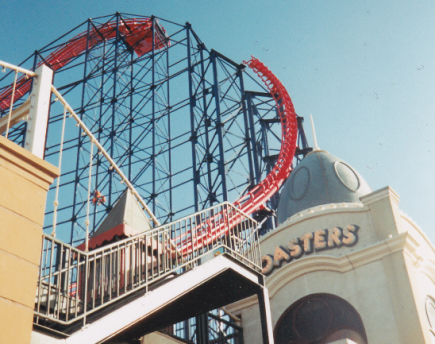
ALMOST THERE… The famous red track went up in January 1994 and the attraction opened in May that year
On May 28 1994, the day finally arrived for the opening of this landmark roller coaster, built entirely in England.
Roller coaster fans and the general public lined the promenade and walkways in the park to catch a glimpse of the first test runs of the day and famous celebrities Bad Boys Inc catching the inaugural first train alongside the chairmen of The Roller Coaster Club of Great Britain Andy Hine and Justin Garvanovic.
Geoffrey Blears, a roller coaster fan from Llandudno, said: “I wasn’t going to go on it when I first saw it, but my Dad said he would never buy me another ticket if I didn’t.
“I remember feeling glad I had done it but not wanting to do it again.”
Geoff remembers not liking the turnaround section on his first ride as there is no choice but to not look 114 feet down to the ground.
Another roller coaster enthusiast, Adam Kean from Blackpool, explained that when he was 12 he could not believe the size of the coaster.
He said: “When I first saw it, it took me two years after the opening to actually ride it. The lift hill was so intimidating as I didn’t know when the drop would happen on my first ride.
“Several years later, I am still riding the coaster and have ridden it both at night time and during the day which is amazing.”
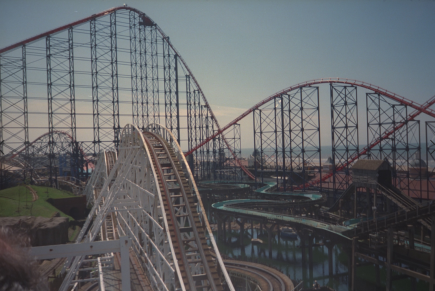
‘SO INTIMIDATING’: Roller coaster fans told MM how terrifying – yet also amazing – they found the ride
Several years ago, the trains were decorated in the Union Jack flag which shows the patriarchy of the park to Britain. The Avalanche trains were also decorated in the flag.
In 2019, The Big One and the Revolution both celebrate anniversaries, 25 and 40 years respectively and both were fabricated by Watson Steel, who still manufactures steel sections for buildings, bridges all over the world under the name of Severfield.
Roller coaster designing is now more of a niche market, and so only specific companies build the steel work. Icon, the latest roller coaster at the Pleasure Beach, was designed and fabricated in Germany before being shipped over to Blackpool.
The North West of England can be proud to say that they were involved with The Year of the Roller Coaster and construction of the one of the most recognised steel coasters in the World.
Dare you to ride The Pepsi Max Big One!
